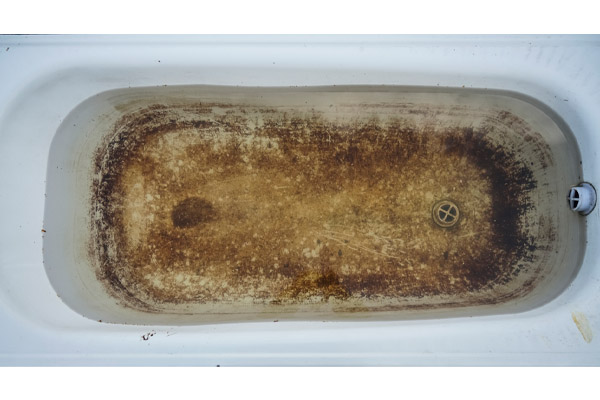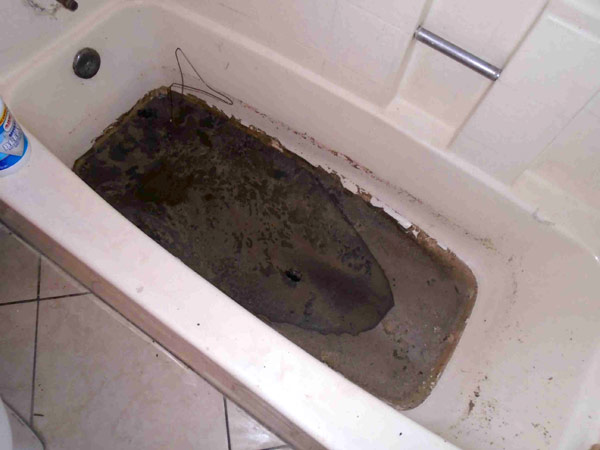My Definitive Explanation: Drainage Coming Up Through the Bathtub
My Definitive Explanation: Drainage Coming Up Through the Bathtub
Blog Article
This great article which follows pertaining to What To Do If Sewage Starts Backing Up Into the Shower is exceedingly stimulating. You should investigate it.

Sewage backup in the bathtub can be a distressing and unsanitary trouble for any kind of home owner. Not only is it bothersome, but it additionally presents major health threats and indicates underlying issues with the plumbing system. Understanding why sewage is coming up with the bath tub is essential for taking ideal action to address the issue efficiently.
Intro to the Concern
Usual Factors for Sewer Backup
Clogs in the Drain Line
Among the most typical sources of sewage back-up is a clog in the drain line. This can occur because of the build-up of debris, grease, or foreign objects in the pipes, avoiding appropriate circulation and triggering sewer to support into your tub.
Tree Origin Breach
Tree roots seeking moisture and nutrients can infiltrate drain lines via small splits or joints. Over time, these origins can expand and broaden, triggering considerable damages to the pipes and bring about sewage back-up issues.
Understanding the Trouble
When sewage starts backing up into the bath tub, it's a clear sign of a trouble with the drainage system. The wastewater that should be flowing away from your home is instead finding its back right into your living space, which can bring about significant damages and carcinogen.
Prospective Reasons
Numerous elements can contribute to sewer backup in the tub. From blockages in the drain line to problems with the plumbing facilities, determining the root cause is necessary for finding a solution.
Aging Infrastructure
Older homes may have dated plumbing systems that are extra vulnerable to deterioration, cracks, and wear and tear. As pipelines age, they become more prone to leakages and blockages, raising the possibility of sewage back-up incidents.
Heavy Rainfall or Flooding
Throughout durations of heavy rainfall or flooding, the drain system might come to be overwhelmed with excess water, triggering back-ups and overflows. This can result in sewer backing up into tubs and other fixtures inside the home.
Indications of Sewage Backup
Foul Odors
Unpleasant odors originating from drains pipes or components, specifically in the shower room, may show sewer backup problems. These odors are typically solid and consistent, indicating a trouble that calls for instant attention.
Slow Draining Fixtures
Bath tubs, sinks, and commodes that drain pipes gradually or otherwise in any way could be experiencing sewage backup. If several components are affected at the same time, it's likely that the issue originates from a common point, such as the major sewage system line.
Gurgling Sounds
Unusual gurgling or bubbling sounds coming from drains when water is running somewhere else in your home are indicative of air trapped in the plumbing system. This air buildup can result from sewer backup and should be checked out quickly.
Health Risks Related To Sewage Backup
Contamination of Water System
Sewage backup can contaminate the water system in your house, posturing a serious health and wellness risk to you and your family. Direct exposure to polluted water can cause stomach concerns, skin infections, and other ailments.
Mold Development
Wetness from sewer backup can develop perfect conditions for mold and mildew growth in your house. Mold and mildew spores can aggravate respiratory issues and trigger allergic reactions in sensitive people, making timely cleanup crucial.
Spread of Illness
Sewer contains unsafe bacteria, viruses, and bloodsuckers that can cause a range of illness, including hepatitis, cholera, and gastroenteritis. Coming into contact with sewer or infected surface areas puts you at risk of infection.
Tidying up After Sewer Backup
Disinfection Procedures
Completely disinfect and disinfect influenced locations after sewage backup to eliminate hazardous germs and stop mold and mildew development. Usage suitable cleaning items and safety gear to ensure secure and efficient cleaning.
Remediation of Influenced Areas
Fix any type of damage to floor covering, wall surfaces, or fixtures triggered by sewage backup. Depending on the extent of the damages, you might need to change carpets, drywall, or various other materials to restore your home to its pre-loss condition.
Immediate Actions to Take
Shutting Off Water System
In case of sewage back-up, it's essential to turn off the water system to stop further contamination and damages. Situate the main water shutoff valve in your house and closed it off up until the issue can be settled.
Getting In Touch With an Expert Plumber
Taking care of sewage backup is not a do it yourself job. Get in touch with a licensed plumber with experience in dealing with sewage-related problems to assess the circumstance and perform essential fixings or clean-ups.
Preventing Contact with Polluted Water
Till the sewage backup is solved, avoid contact with infected water to prevent the spread of microorganisms and virus. Use safety gear if you should be in the damaged area and wash your hands completely later.
Preventive Measures
Routine Maintenance of Sewage System Lines
Schedule regular inspections and maintenance of your drain lines to identify and address possible issues before they rise into major problems. This can include cleaning particles, evaluating for tree origin breach, and fixing any type of damaged pipelines.
Mounting Backwater Valves
Think about mounting bayou shutoffs in your plumbing system to avoid sewage from receding right into your home during durations of heavy rainfall or flooding. These valves immediately close when water starts backing up, safeguarding your building from contamination.
Proper Disposal of Family Waste
Prevent purging anything other than bathroom tissue and human waste down the bathroom to prevent clogs and blockages in the sewage system line. Dispose of grease, oil, and various other family chemicals properly to decrease the threat of plumbing troubles.
Why Is Water Backing Up in My Bathtub When I Flush My Toilet?
What to do about a sewer line clog
First, don’t bother with plunging. No amount of plunging will dislodge the clog in a sewer line. The clog is too far away. Plungers are for clogs in the toilet itself, not the sewer line. Plus, the most likely causes of a sewer clog are:
Tree roots Flushed toys or feminine products Grease buildup Those items don’t move easily. And in the case of tree roots, the roots need to be cut out of the pipe and the pipe will need to be repaired.
You’ll need a closet auger. A closet auger is a type of plumber’s snake with a protective cover to keep from scratching the delicate porcelain toilet. If the clog is further down, you may need to remove the toilet or use one of your cleanouts to get to the clog.
We also recommend doing a video inspection of the drain to ensure that the cause of the clog has been completely removed. Otherwise, you could have the same problem again in a few days or weeks.
https://mspplumbingheatingair.com/blog/why-is-water-backing-up-in-my-bathtub-when-i-flush-my-toilet

I'm just very curious about What To Do If Sewage Starts Backing Up Into the Shower and I'm hoping you appreciated the entry. If you appreciated our blog entry kindly don't forget to share it. Many thanks for your time invested reading it.
Call Today
Report this page